Launching growth marketing campaigns takes more than creative assets and ad spend. Every click, form fill, and checkout relies on systems that deliver your message fast.
Marketers with the right tech stack capture attention and achieve conversions. The challenge is that stacks are no longer just email tools and landing page builders. They now offer APIs, automation platforms, and analytics. They offer the hosting infrastructure that keeps everything running during peak times.
Our guide explains how to build a modern B2C/B2B marketing tech stack with the right hosting foundation. No matter your role, the right hosting partner ensures speed, security, and real support when it matters most.
What is a Marketing Tech Stack?
A marketing tech stack, or martech stack, is a collection of software and tools used to plan, manage, execute, and report on marketing activities.
But it’s not just companies that refer to martech stacks. Consultants, freelancers, and fractional marketers adopt and frequent this lingo. Take this simple marketing tech stack example from Emily Baillie, a Threads creator and marketing consultant:

Conversations like these pop up frequently in the marketing space. From Reddit to LinkedIn to Twitter, and to Threads.
As the infamous “Supergraphic” from Scott Brinker visually captures, the global martech industry is a dynamic USD 175.95 billion industry with hundreds of new players trooping in year-over-year (YoY). In fact, marketers today have more tools than they know what to do with. Supply being more than demand is one reason why marketers tend to enumerate and share the tools they use and love.
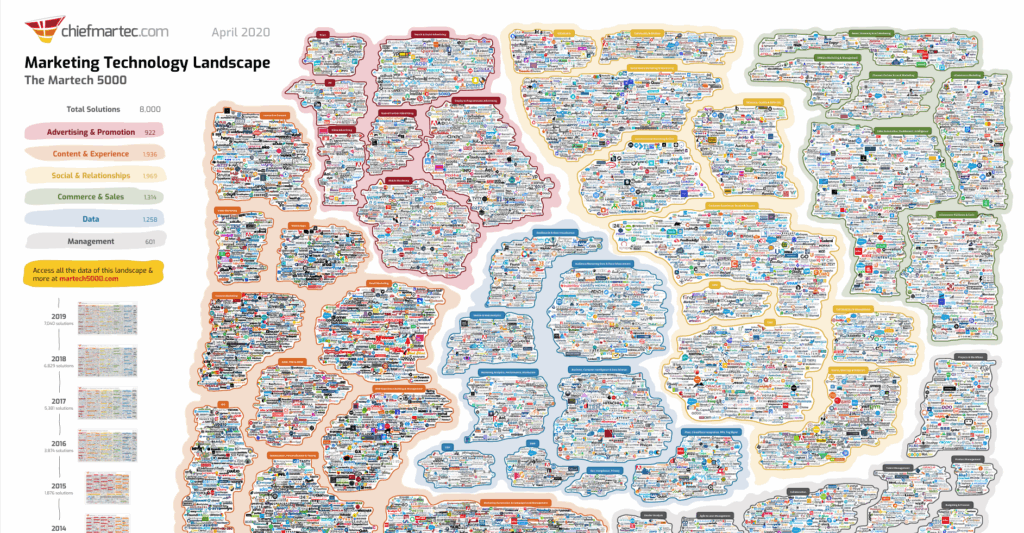
Looking at the visual above, it’s easy to be overwhelmed by the sheer magnitude of the marketing technology industry. Martech is a category that houses other subcategories, and this structure should reflect in a standard marketing tech stack. Core components usually include:
Marketing analytics and tracking tools to collect event data and attribution; think GA4, server-side tracking, and tag management.
Email marketing platforms to handle nurturing and lifecycle automation; from broadcast to behavior triggers.
Landing page builders to ship experiments without developer backlog; visual editors plus reusable blocks.
Content & brand marketing tools for audience listening, measuring brand sentiment, creating visual and text-based content assets etc.
Project management tools to manage marketing operations and move campaigns from “to-do” to “done”.
Why Your Hosting Choice Makes or Breaks Marketing Campaigns
Hosting is more “infrastructure” than a direct marketing tool you may use to schedule social media posts. Still, it fits into the modern marketing technology ecosystem as the foundation for your digital presence.
The speed of retrieval and constant availability of all the marketing materials on your website hinges on the quality of your hosting servers. That’s why the decision-making for marketing tech stack should begin with hosting infrastructure, not end with it.
The Hidden Cost of Poor Performance
A slow website can lead to less ROI on your growth marketing campaigns. It doesn’t matter how good your offer, product, or landing page is. If your site takes more than two seconds, your prospects bounce off to a competitor’s.
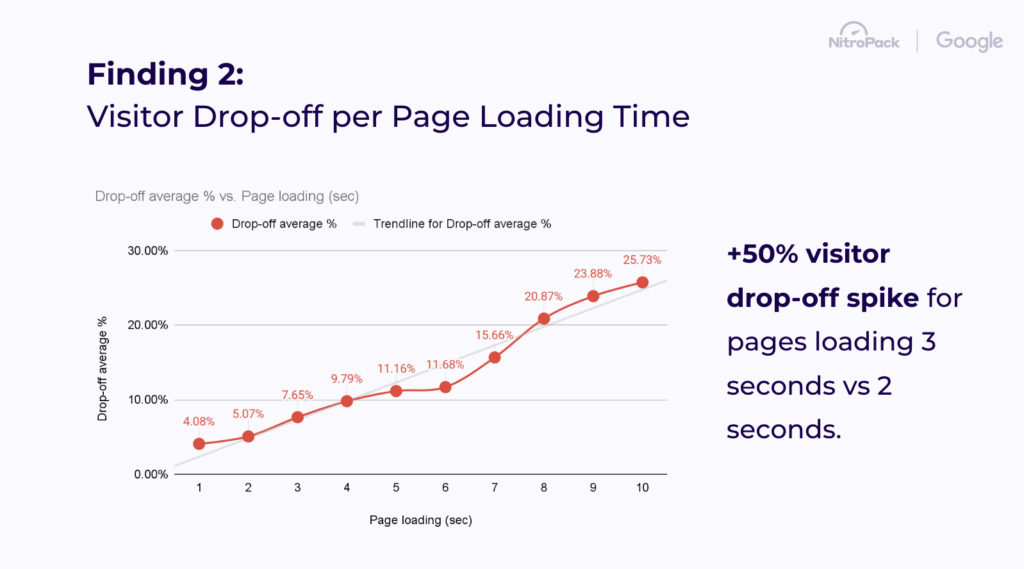
The result is wasted ad spend and inflated Customer Acquisition Costs (CAC). Reliable hosting ensures your digital marketing tech stack delivers experiences fast enough to convert clicks into revenue.
Scalability Challenges Marketing Teams Face
A resilient marketing tech stack turns demand spikes into sales instead of support tickets. Black Friday traffic spikes, viral content, and product launch campaigns compress months of demand into hours.
Growth also stresses geo-delivery; a campaign that expands from one region to five needs low latency everywhere. Set up your digital marketing tech stack so it can grow in two ways: upgrade to more powerful servers like VPS or dedicated machines when you need extra strength, and spread traffic across multiple servers with load balancing and CDN caching so users always get fast, reliable pages.
Compliance and Security Concerns
Compliance and security are table stakes when campaigns handle customer data. Under General Data Protection Regulation (GDPR) laws, your host acts as a processor and must offer appropriate technical and organizational measures; your data processing agreement should reflect Article 28 requirements.

If you collect emails for lifecycle marketing, keep subscriber data safe by storing it on encrypted drives, limiting who can access it, and recording all activity. For payments, use hosting that meets PCI-DSS standards. The latest version, PCI DSS v4.0, adds stronger rules for multi-factor authentication, phishing protection, and guarding against web attacks. Also, make sure data moving between your site and users is encrypted with TLS, and always keep your security certificates up to date. These are the minimum safeguards expected.
Essential Hosting Requirements for Modern Growth Marketing Campaigns
Performance Standards That Protect Revenue
Target sub-second load times (Largest Contentful Paint).
Require 99.99% uptime or higher during campaigns.
Use a global CDN with edge caching, NVMe SSD storage, and HTTP/2 or HTTP/3.
Optimize for mobile with responsive images, deferred scripts, and server-level caching.
Integration Capabilities
Confirm API access for marketing automation and server-side tagging.
Ensure databases support low-latency reads/writes and optimized queries.
Verify compatibility with HubSpot, Salesforce, and Google Analytics.
Require webhook support for real-time sync of forms, purchases, and refunds.
Scalability Features
Plan for peak traffic by using VPS or dedicated servers with autoscaling.
Secure bandwidth flexibility to handle viral campaigns and heavy media.
Expand storage easily for growing creative and user-generated content.
Maintain separate staging, testing, and production environments.
Developer-Friendly Features
Use Git integration for version control and safe rollbacks.
Automate SSL certificate issuance and renewal.
Pair hosting with CDN capabilities to offload assets and customize cache rules.
Schedule automated backups and retain point-in-time recovery options.
Hosting Solutions Mapped to Marketing Use Cases
Dedicated Servers for Enterprise Marketing Operations
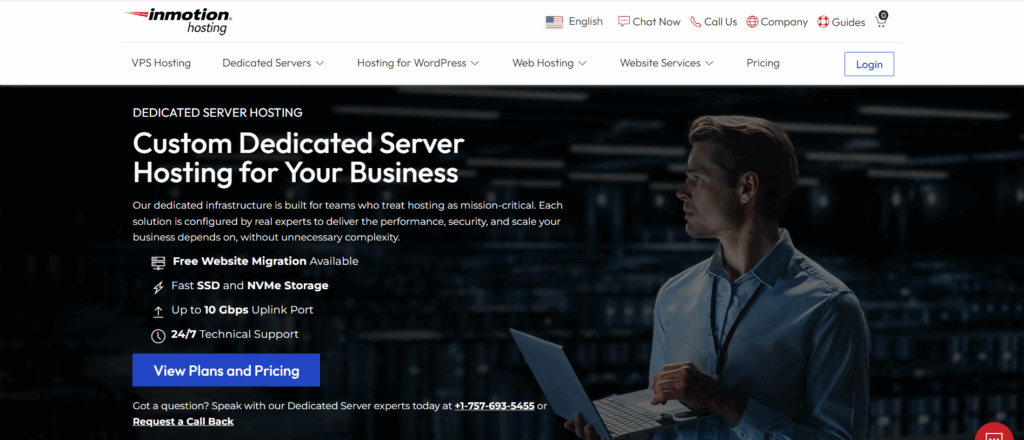
For multi-brand campaigns and high-traffic eCommerce, InMotion Hosting’s dedicated servers provide the control and predictability enterprise teams need. You get isolated CPU, RAM, and NVMe storage; no resource contention from neighbors; and custom configurations that match your compliance profile. Enterprises running a B2B marketing tech stack with strict governance can standardize images, enforce security baselines, and route traffic through a global CDN to meet sub-second targets across regions.
Target: Large marketing teams with complex infrastructure needs and internal IT policies.
Use Case: Multi-brand campaigns, high-traffic eCommerce, and personalization at scale where every millisecond matters and every dependency must be audited.
Benefits: Maximum control, dedicated resources, custom configurations, private networking, and advanced caching tuned for high LTV cohorts.
Best For: Companies with $500K-plus marketing budgets; teams with PCI or GDPR requirements; growth leaders who want deterministic performance during Black Friday, viral content, and product launch campaigns.
InMotion Hosting Fit: InMotion Hosting Dedicated Servers with NVMe, optional root access, and WHM provide consistent performance for your marketing tech stack. If you need help mapping capacity to forecast traffic, our specialists are available Monday to Friday.
VPS Solutions for Growing Marketing Teams
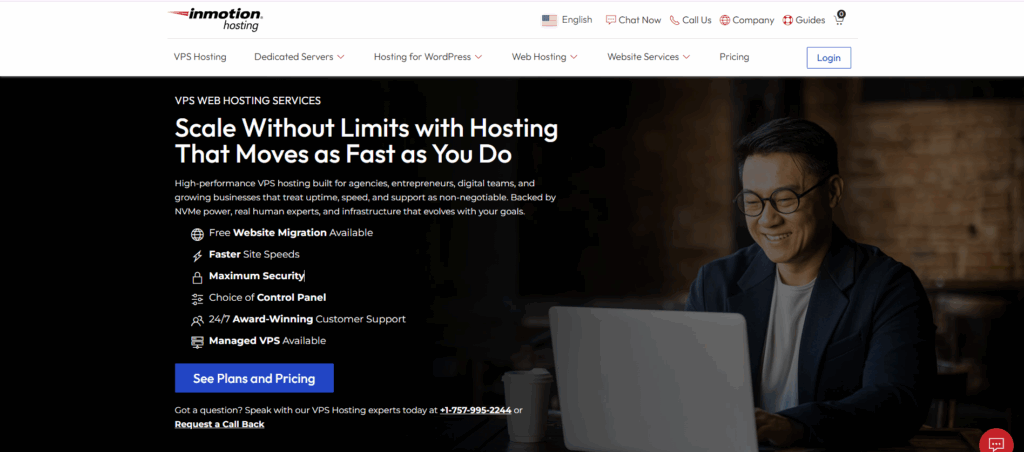
VPS hosting plans balance flexibility and cost efficiency for mid-size companies scaling digital presence. You can spin up environments fast, isolate workloads by brand or region, and right-size compute as experiments succeed.
Target: Mid-size marketing teams growing from a handful of sites to a portfolio.
Use Case: A/B testing environments and multi-site management where each property needs its own resources and deployment pipeline.
Benefits: Flexible resource allocation, cost control, rapid deployment, and staging-to-production workflows that protect revenue.
Best For: Marketing teams managing 5 to 20 properties, seasonal campaigns with predictable surges, and regional landing pages that require low latency.
InMotion Hosting Fit: InMotion Hosting VPS Hosting with NVMe, dedicated IPs, and SSH access supports CI/CD, Git-based deploys, and server-level caching that keeps digital marketing tech stack pages fast.
Managed WordPress for Content Marketing
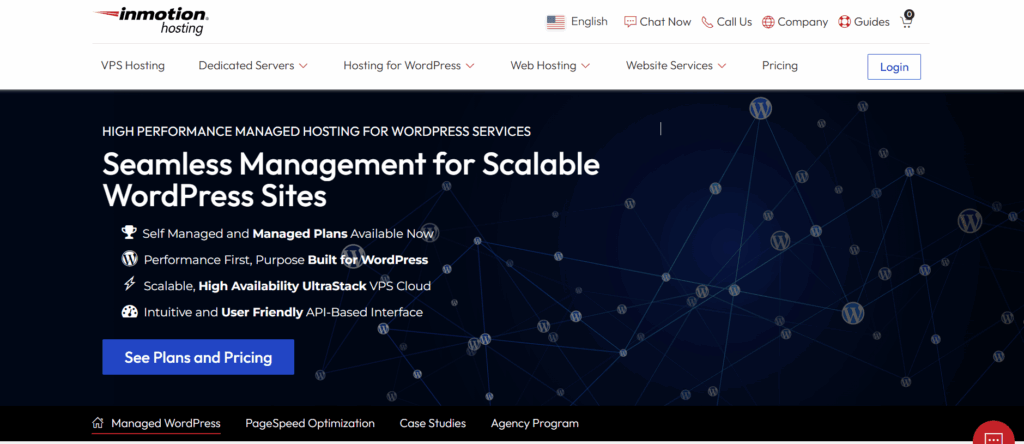
Managed WordPress hosting simplifies content operations for teams that publish at pace. InMotion Hosting handles updates, security, and performance so content marketing teams can focus on creating data-backed content briefs, SEO, and content distribution.
Target: Content-heavy strategies led by inbound marketing teams, content creators, and SEO agencies.
Use Case: Blog networks, content hubs, and SEO-focused sites where editors need reliable publishing, image optimization, and schema support.
Benefits: Optimized performance, automatic updates, one-click staging, and CDN integration that supports passage-rich articles and topic clusters.
Best For: Teams building a content marketing tech stack with editorial calendars, internal linking strategies, and conversion-focused templates.
InMotion Hosting fit: InMotion Hosting Managed WordPress with NVMe, server-level caching, and backup and versioning systems keeps “marketing tech stack examples” fast and resilient.
Cloud Hosting for Flexible Marketing Campaigns

Cloud hosting offers elastic scaling and geographic reach for unpredictable campaigns. You can deploy workloads closer to audiences, provision development environments quickly, and align spend with real-time demand.
Target: Marketing teams running unpredictable, high-variance campaigns across multiple regions.
Use Case: Global rollouts that need low latency, influencer-driven campaigns with sudden spikes, and development environments for QA and integrations.
Benefits: Elastic scaling, global CDN reach, quick environment setup, and real-time API sync keep campaigns fast and flexible.
Best For: Teams experimenting with growth initiatives, expanding into new regions, or running complex multi-channel campaigns that require flexibility.
InMotion Hosting Fit: InMotion Hosting Cloud VPS combines elastic scaling, bandwidth flexibility, and API-driven provisioning to keep your marketing tech stack agile.
Building Your Marketing Hosting Strategy
Assess Your Current Marketing Infrastructure
Start with a clear inventory so your hosting plan matches reality.
List every domain, microsite, blog, and regional landing page you manage; include environments beyond production.
Capture historical traffic and note peak simultaneous users during launches.
Map which tools in your marktech stack touch a database, such as form handlers, personalization engines, and product feeds.
Document compliance requirements that influence storage, logging, and access control.
Set a realistic annual marketing technology budget that covers hosting, a CDN, backups, and observability.
Plan for Growth and Scale
Tie infrastructure to growth goals so costs track revenue.
Forecast traffic from your channel plan using expected CTR, CVR, and media spend; stress-test for campaign surges and seasonal peaks.
Allocate budget between hosting and tools; reserve a contingency for bandwidth and storage during spikes.
Schedule infrastructure changes away from campaign-critical dates and create an explicit rollback window.
Run a risk assessment for moments that cannot fail, such as Black Friday, influencer pushes, and product launches.
Integration Planning
Confirm that your stack connects cleanly so data flows without friction.
Check marketing automation platform requirements for API limits, IP allowlists, and webhook endpoints.
Plan analytics and tracking with server-side tagging where possible; validate that your host supports reverse proxies and secure keys.
Define customer data management for consent capture, encryption at rest, and access logging.
Audit third-party compatibility for HubSpot, Salesforce, Google Analytics, and your payment gateway.
Red Flags to Avoid When Choosing Marketing Hosting
Budget-Only Decision Making
Price-only decisions often cost more during campaigns. Watch for hidden fees that appear when traffic climbs; bandwidth overages, CDN egress, backup restores, and premium SSL add up fast. Low-cost plans may throttle CPU or limit I/O, which slows pages and hurts conversions in your marketing tech stack.
Ignoring Compliance Requirements
International campaigns introduce data residency rules. If customer data lands in the wrong region, you create risk. Require a signed DPA, regional data options, and encryption at rest and in transit. Validate PCI for eCommerce and GDPR for subscriber data captured by automation tools.
Underestimating Traffic Needs
Campaign math is unforgiving. Many teams plan for average load instead of peak. Ask vendors for tested concurrency numbers, not only visits per month. Ensure bandwidth headroom for video campaigns and heavy creative. Check whether caching, autoscaling, and WAF rules are tuned for viral content scenarios.
Implementation Best Practices for Marketing Teams
Phased Migration Strategy
Reduce risk by moving properties in waves.
Start with non-critical microsites; validate templates, redirects, and tag firing in a staging environment first.
Schedule cutovers during low-traffic windows and freeze new deployments for 24 to 48 hours after each move.
Warm caches and the CDN before DNS flips; use low TTLs so rollbacks are fast. Verify pixels, webhooks, and server-side tagging after propagation.
Run side-by-side tests for TTFB and Largest Contentful Paint to confirm sub-second targets.
Document a rollback plan that restores backups, reverts DNS, and disables conflicting plugins.
This disciplined sequence keeps your marketing tech stack stable while you transition to Managed WordPress, VPS, or Dedicated Servers within a modern tech stack marketing plan.
Performance Monitoring Setup
Instrument both technical and revenue metrics.
Track TTFB, LCP, error rate, 5xx spikes, CPU, memory, disk I/O, bandwidth, and cache hit ratio.
Pair these with form completion rate, add-to-cart rate, and conversion rate so issues surface as lost revenue, not just slow graphs.
Configure synthetic tests from your target regions to protect global campaigns; add real user monitoring for mobile.
Create alerts tied to campaign thresholds; for example, page LCP above one second or 5xx rate above 1 percent during paid pushes.
Review dashboards daily during launches and schedule quarterly performance audits.
This rigor helps your digital marketing tech stack stay reliable through traffic surges.
Team Training and Documentation
Give people the access and playbooks to move quickly. Use least-privilege roles, SSO, and key rotation for developers and marketers.
Standardize Git flows for campaign assets; define branch rules, approvals, and rollback steps.
Maintain a deployment runbook with checklists for preflight tests, cache warming, CDN rules, and post-launch validation.
Write emergency response protocols that include an incident severity matrix, who to page, and how to fail over.
Run restore drills so backups are more than a checkbox.
Keep a change log visible to all marketing and web development team members.
If questions arise, our specialists are available Monday to Friday to help you align hosting operations with your B2B marketing tech stack. We also have a live chat function for those inevitable moments you need help in the middle of the night or on a weekend.
Conclusion: Future-Proofing Your Marketing Infrastructure
Your hosting layer affects every growth marketing campaign you will ever run. It determines whether landing pages load fast enough to convert, whether analytics scripts fire correctly, and whether your creative assets stay online during a surge in traffic. For that reason, treat hosting as a core part of your marketing tech stack, not a background utility.
At the end of the day, every campaign depends on a solid foundation. With InMotion Hosting, you get speed, reliability, and real people by your side, so every click has the best chance to turn into a customer.
Ready to future-proof your marketing infrastructure? Explore InMotion Hosting solutions and find the plan that supports your next stage of growth.

